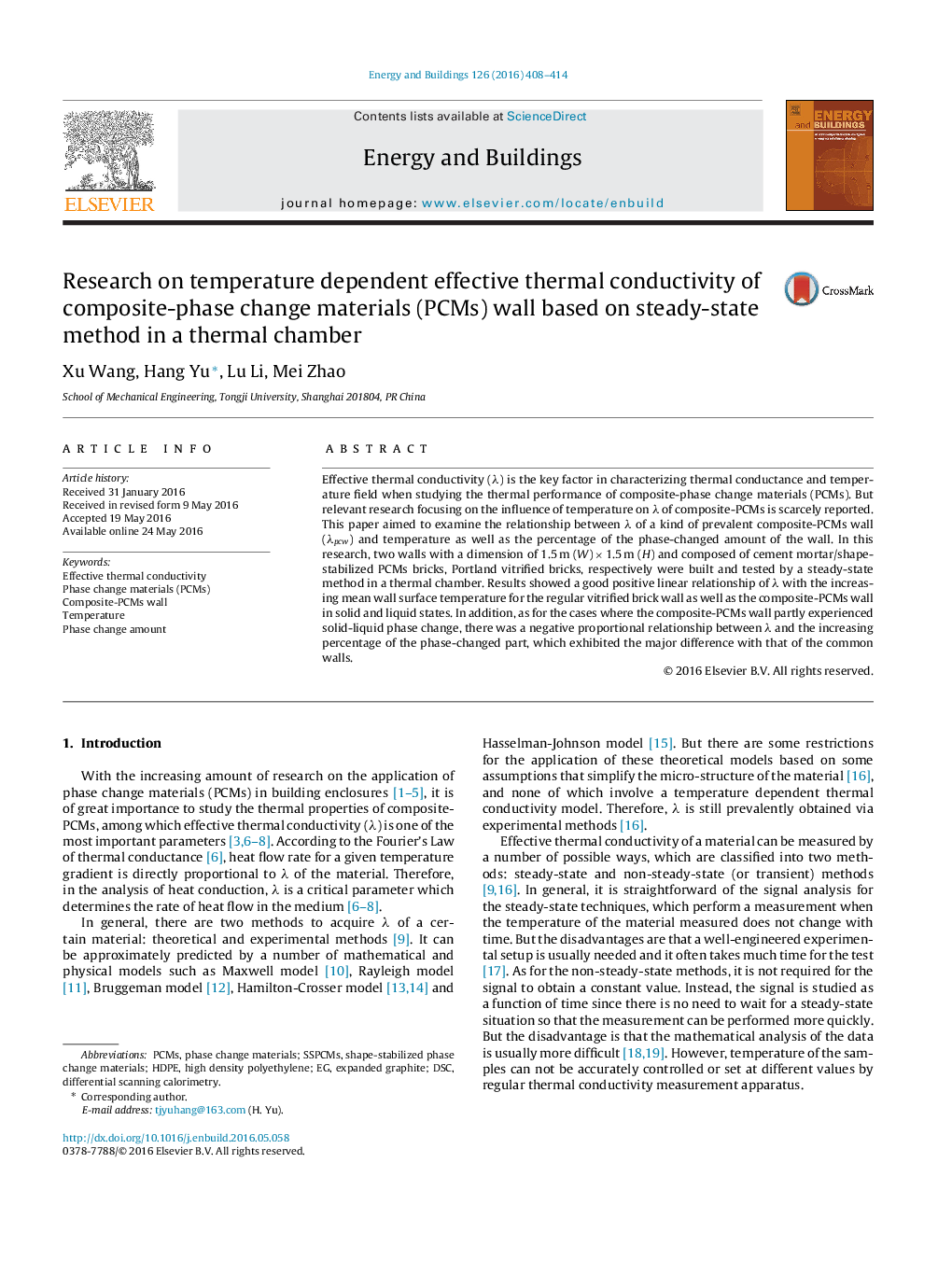| کد مقاله | کد نشریه | سال انتشار | مقاله انگلیسی | نسخه تمام متن |
|---|---|---|---|---|
| 261944 | 504006 | 2016 | 7 صفحه PDF | دانلود رایگان |
• An innovative steady-state method of thermal chamber apparatus was introduced.
• Temperature had positive influence on λ of a regular wall and a composite-PCMs wall.
• Solid-liquid phase change had negative influence on λ of the composite-PCMs wall.
Effective thermal conductivity (λ) is the key factor in characterizing thermal conductance and temperature field when studying the thermal performance of composite-phase change materials (PCMs). But relevant research focusing on the influence of temperature on λ of composite-PCMs is scarcely reported. This paper aimed to examine the relationship between λ of a kind of prevalent composite-PCMs wall (λpcw) and temperature as well as the percentage of the phase-changed amount of the wall. In this research, two walls with a dimension of 1.5 m (W) × 1.5 m (H) and composed of cement mortar/shape-stabilized PCMs bricks, Portland vitrified bricks, respectively were built and tested by a steady-state method in a thermal chamber. Results showed a good positive linear relationship of λ with the increasing mean wall surface temperature for the regular vitrified brick wall as well as the composite-PCMs wall in solid and liquid states. In addition, as for the cases where the composite-PCMs wall partly experienced solid-liquid phase change, there was a negative proportional relationship between λ and the increasing percentage of the phase-changed part, which exhibited the major difference with that of the common walls.
Journal: Energy and Buildings - Volume 126, 15 August 2016, Pages 408–414
